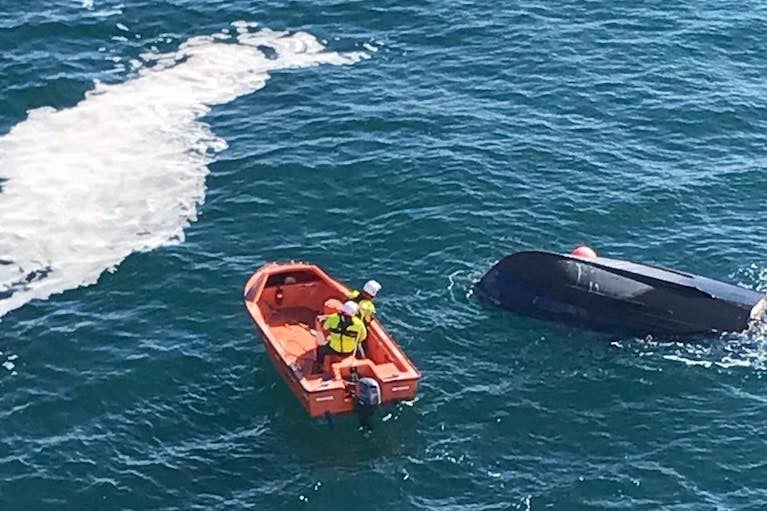Displaying items by tag: Orkney longliner
Irish Ferries Isle of Inishmore Locates Kinsale Orkney Longliner Adrift 150-Miles from Home
The Irish Ferries Isle of Inishmore cross channel ferry spotted a 20-foot Kinsale-based fishing boat capsized off the coast of Wales this afternoon.
The ferry, under the command of well-known Irish yachtsman and tall ship skipper Captain Gerry Burns, was returning from Pembroke Dock to Rosslare when the ship's lookout spotted the upturned black and blue hull of the Orkney Longliner drifting some 150 miles from her home port.
At the time of the discovery at 4 30 pm this afternoon, Capt Burns told Afloat: 'We didn’t know if there was anyone on board when we found her'.
The hull was conspicuous at sea in the good weather due to a large red mooring buoy still attached to its bow.
 Milford Haven RNLI lifeboat and the Irish Ferries Isle of Inishmore rescue boat investigate the upturned hull
Milford Haven RNLI lifeboat and the Irish Ferries Isle of Inishmore rescue boat investigate the upturned hull
The ferry altered course and went to investigate. News of the discovery was relayed to the Coastguard and Captain Burns dispatched one of the ships rescue boats. The ferry stood by for an hour until the Milford Haven RNLI lifeboat arrived on scene. The lifeboat was able to right the fishing boat.
It is understood the boat's name is 'Braveheart' and that she broke her moorings in the West Cork harbour during Storm Ellen on August 21st. The owners of the boat have been contacted.






























































